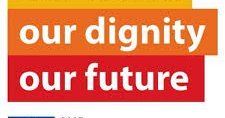The European Commission dedicates 2015 as the European Year for Development Aid. We come back here on the new Development Aid program for 2014-2020.
After two and a half years of debate and negotiation, a new generation of EU spending programs went into effect on January 1st, 2014 as part of the 2014-2020 multi-annual financial framework (MFF) that will guide European financial objectives over the next six years. Aside from a 3.7% reduction in EU spending commitments that highlights an era of budgetary discipline championed by several Member States , this new framework represents a turning point in EU developmental efforts due to its drastic shift of aid distribution away from relatively stable countries like India and Malaysia and towards countries where these resources are needed most.
As part of a new EU mentality to distribute development aid primarily to countries where it can have the greatest impact, 75% of EU developmental support from now until 2020 will be concentrated on the world’s poorest countries, with priority given to those suffering from ongoing political crises and those who are often affected by natural disasters . This differentiated approach can be seen as a continuation of the EU developmental framework known as the “Agenda for Change,” originally adopted in 2011, in which EU leadership summarised the need for a new approach to poverty reduction, arguing “several partner countries have become donors in their own right, while others are facing increasing fragility. ” Therefore, as part of this process known as “graduation,” bilateral grant assistance will no longer be available to countries classified as “high-income” or “upper-middle income” in addition to countries who represent more than 1% of the global Gross Domestic Product.
This means that 19 countries (notably Brazil, China, Iran, and Mexico) will be cut off from bilateral grant assistance distributed by the Development Cooperation Instrument (DCI), the EU’s primary instrument for development cooperation. Consequently, the short-term future of EU development efforts will see the world’s least developed countries receiving approximately 90% of the funding available to the EU’s most powerful development instruments, whereas upper-middle income countries will have to rely on more innovative forms of aid (e.g. a blending of loans and grants or other risk-sharing mechanisms).
And yet, despite the restructuring of developmental efforts by the new EU budget, recent statistics show that the majority of eEuropeans would support even stronger development cooperation with developing countries. According to data published by the European Commission in January of 2015, 85% of Eeuropeans agree that it is important to help people in developing countries, and over half believe the EU should keep its promise to increase aid to developing countries. Moreover, an additional 15% of the population believe these efforts should be extended beyond what has already been promised. All in all, these statistics indicate that approximately two-thirds of Europeans are not satisfied with the level of aid currently being directed towards developing countries. Furthermore, the fact that 64% of EU28 respondents believed poverty-reduction should be one of the main priorities of the EU (given that respondents in every Member State believed poverty-reduction should be a priority of the EU rather than of their national government) helps explain the recent EU budgetary decisions to focus developmental efforts specifically on low-income countries.
But while some worry the new EU budget does not designate enough funds towards development policies, others are concerned by the new budget’s reallocation of funds from traditional spending areas to the sector of growth development, especially given that two of the biggest victims of this shift have been programs involving agriculture and cohesion policy. And while it is true that these shifts away from more traditional spending sectors have been largely welcomed by the European community, one has to wonder if these recent policy shifts are fueled by a genuine concern for those in developing countries or by the need of representatives to appear proactive and innovative in a time of economic hardship.

Follow the comments: |
|
